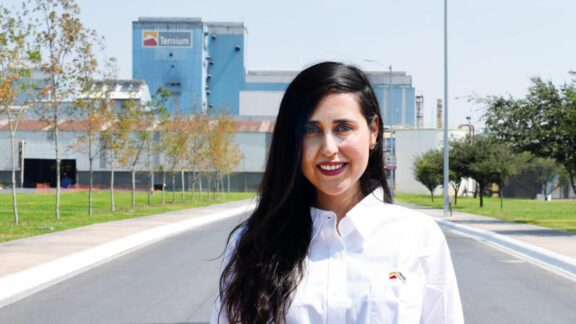Steel producers looking to adjust their current manufacturing strategies often face challenges when anticipating the impact of their investments. Primetals Technologies uses advanced plant logistics simulations to determine the optimal investments in the melt shop and beyond.
As the steel industry transforms toward hybrid and electric steelmaking alongside transitions in raw materials towards direct reduced iron and increased scrap usage, producers are pressed to reliably assess their approach to these necessary changes and reduce risk. The ability to simulate plant logistics proves invaluable during this time of transformation.
Predictive Tools for Transformation
A plant logistics simulation assesses everything from production schedules to changes in capacities. This approach is vital to realizing a plant’s full potential. By offering steel producers the ability to reexamine all aspects of their production chain, from scrap intake to continuous casting machines, the simulation uncovers hidden bottlenecks and can advise critical changes to the logistics inside a plant. By looking closely at the logistics system for integrated steel production and focusing on production capacities and ladle logistics in the melt shop, a unique simulation model helps inform steel producers of the best decision.
Step-by-Step Process
Plant logistics simulation is a step-by-step approach that begins with an on-site fact-finding visit to obtain a general overview of the current operations at a steel plant. After collecting production data, including processing times, product mix, and corresponding quantities, a realistic production schedule or simulation model is produced with all primary and secondary steelmaking units. This model provides an essential offline view of the entire melt shop and production chain and identifies immediate bottlenecks, even during the early planning phases.
These simulation models can also incorporate information from various processes—e.g., areas in and beyond the melt shop, including scrap yard logistics, metrics from continuous casting machines, and even to coil transport down the line—and predict key performance indicators—e.g., the number of ladles, heat in ladle time, transport time, and utilization figures. In the end, a 3D animation brings the simulation to life, and producers can watch their virtual melt shop in action.
Proven Solutions
By taking a close look at the production schedule, the simulation can reveal, for example, that the treatment on a ladle furnace may take too long. After that, the simulation can determine if transportation can easily be improved. If the simulation reveals that the ladles are too late to their scheduled positions, the bottleneck has been identified, and a solution can be proposed. This approach has already seen promising results, with several steel producers looking to transform their production process.
In one investigation, a steel producer had assumed their bottleneck was around the BOF. After initial findings, and adjusting data to some simple, cost-effective solutions in the simulation, the bottleneck quickly shifted. The simulation correctly identified the bottleneck at the ladle furnace, not the BOF. This meant that investment capital could be readjusted and production capacity increased. In another investigation, a study looked into the transition of a traditional BOF steelmaking operation toward a hybrid model with an electric arc furnace (EAF). Here, the simulation revealed that the proposed transportation route of hot metal through the melt shop by the steel producer would overload the existing system. Once more, a new transportation system could then be conceived using the simulation model to make the optimal choice.
Simulating the Future of Steel Production
While the topics of “green” steelmaking and hybrid (BOF/EAF) steelmaking become more than talking points, the implementation of different input materials and the coordination of these materials within the melt shop will become a deciding factor in the operation of steel plants in the future. The primary focus of investigations and simulation models is the melt shop. However, several aspects of the production process can easily be incorporated into the simulation for a truly transparent look into the entire production process, from the scrap yard to EAFs and BOFs to logistics involving continuous casting machines, all the way to coil transport. Steel producers can then implement their changes in a virtual environment and use a simulation model to determine the most cost-effective investment. As the industry transforms and pressures to reduce CO2 emissions increase, a plant logistics simulation helps producers make game-changing decisions in a transforming industry.
MORE INFORMATION
Learn more about Primetals Technologies’ approach to integrated plants and solutions at primetals.com

